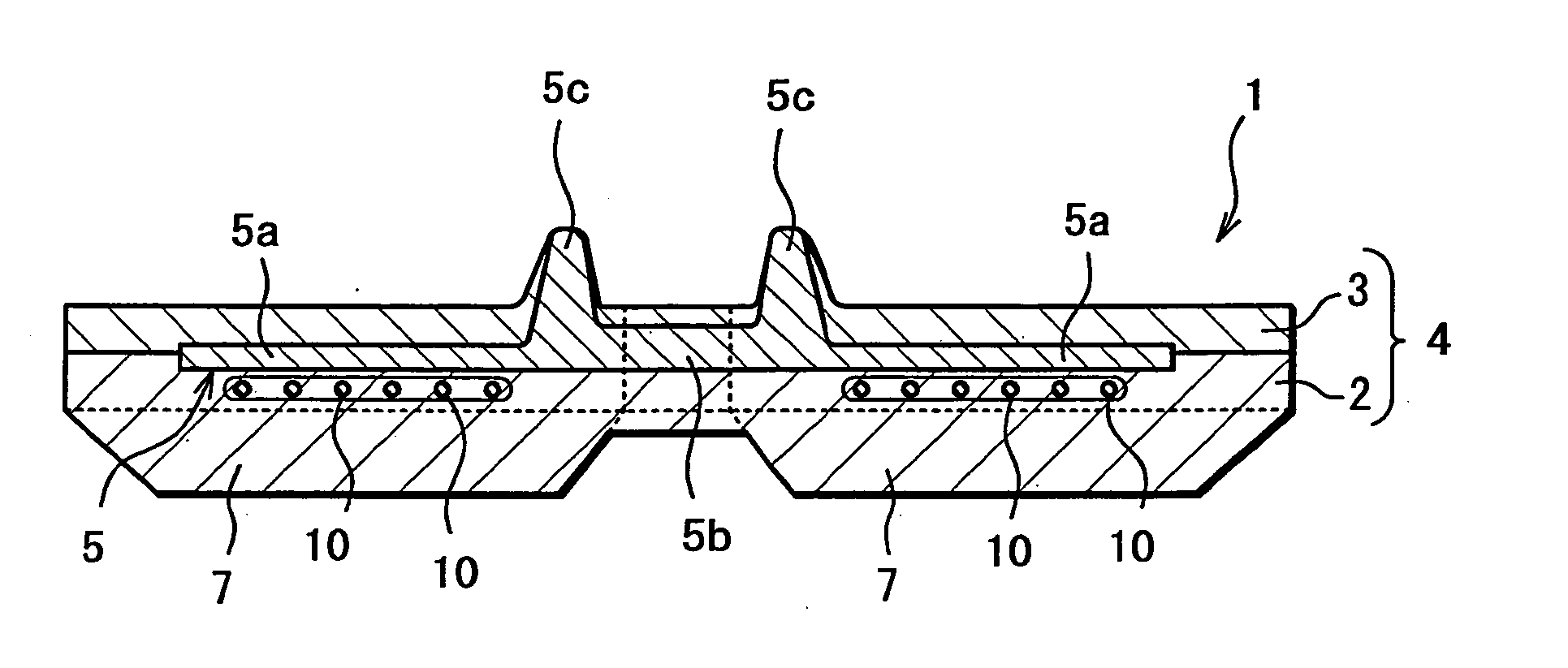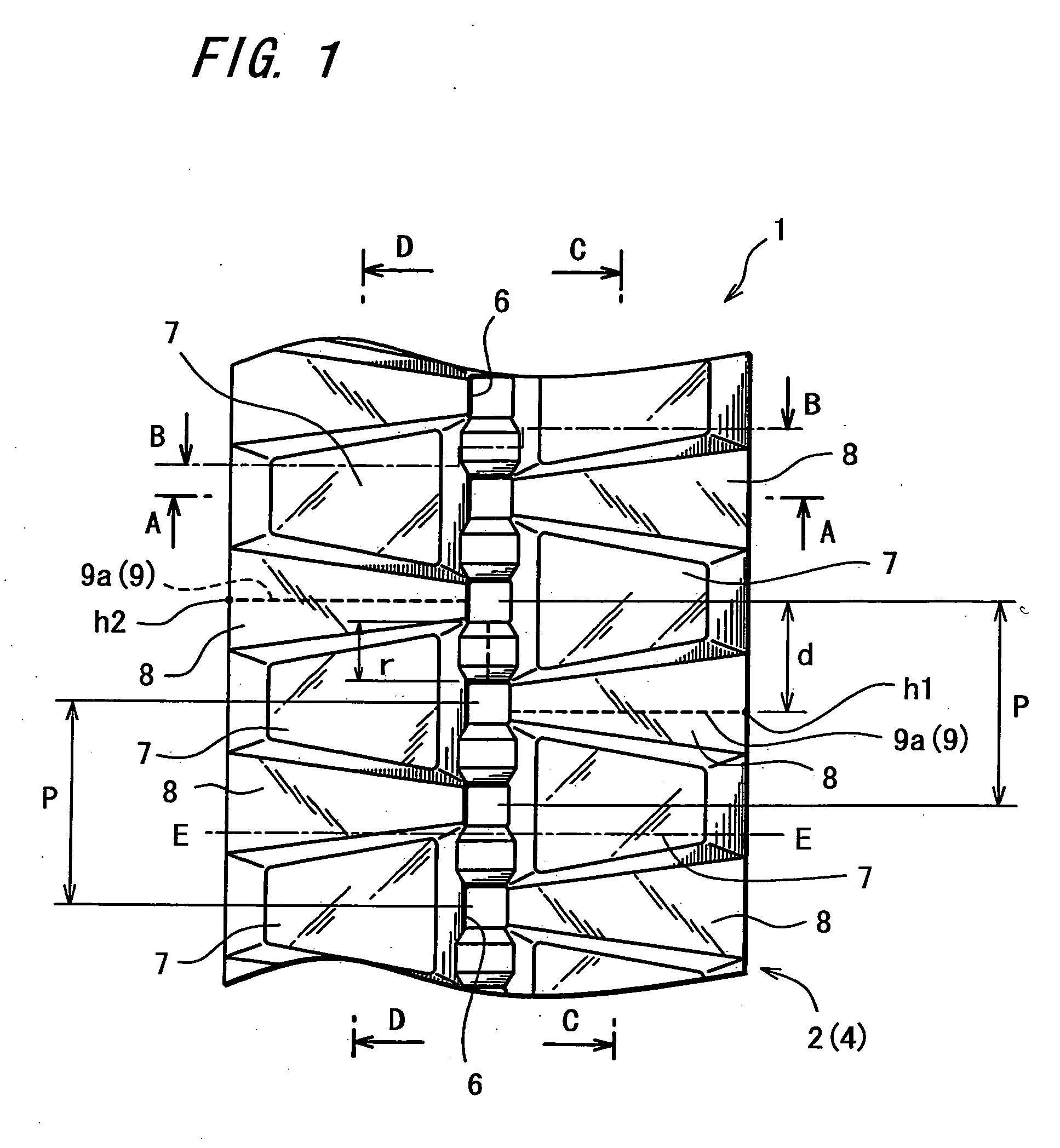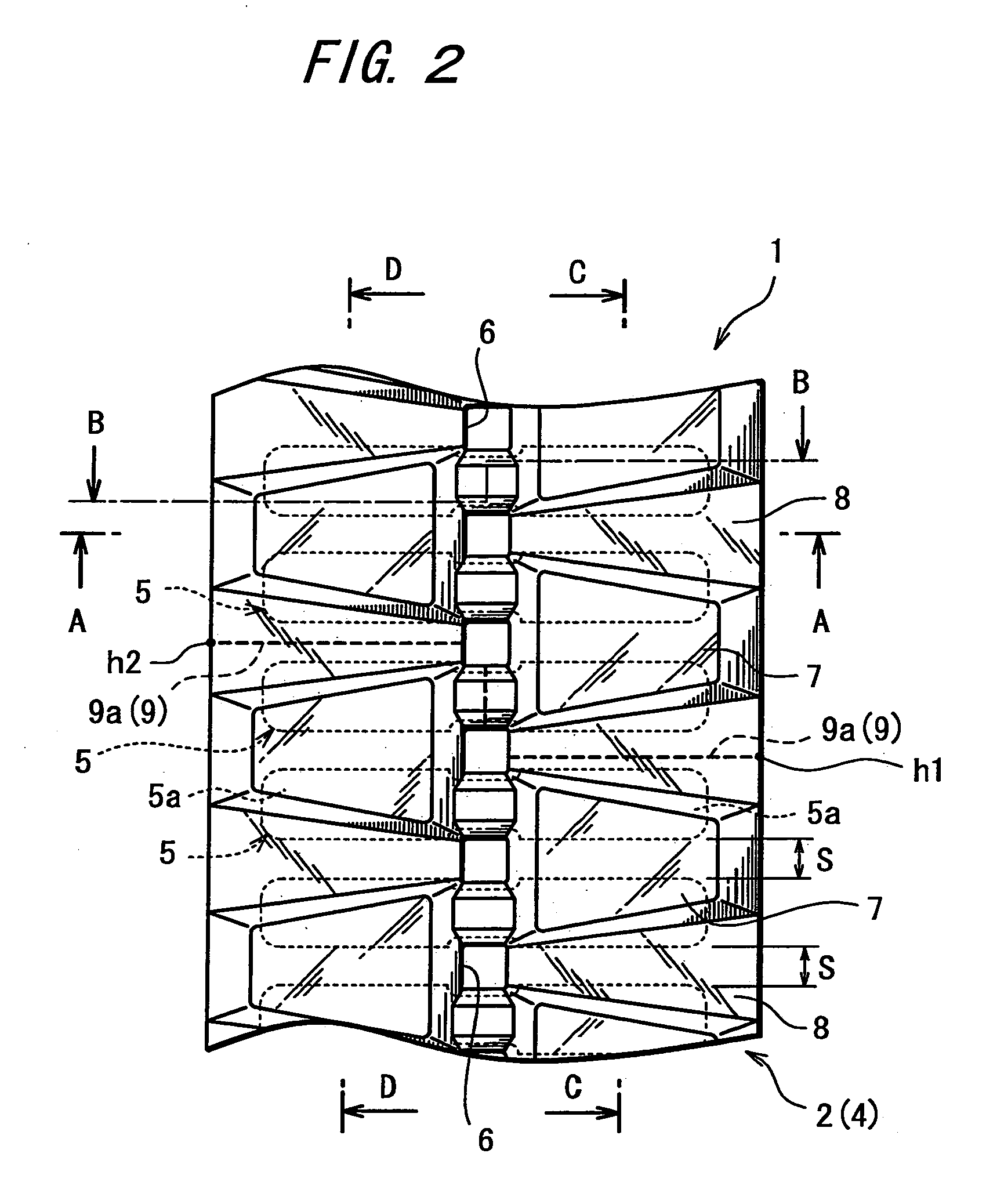Rubber crawler
a crawler and rubber technology, applied in the field of rubber crawlers, can solve the problems of lowering the durability of the crawler, affecting so as to improve the safety of the crawler, and reduce the risk of fractur
- Summary
- Abstract
- Description
- Claims
- Application Information
AI Technical Summary
Benefits of technology
Problems solved by technology
Method used
Image
Examples
first embodiment
[0026]FIG. 1 is a plan view showing an outer circumferential surface (ground-engaging surface) of a rubber crawler 1 according to the invention. FIG. 2 is a plan view depicting core bars as a widthwise reinforcing member with broken lines which are added to FIG. 1. FIG. 3 is a plan view showing an inner circumferential surface of the rubber crawler 1. FIG. 4 is a sectional view taken on the line A-A in FIG. 1 through FIG. 3. FIG. 5 is a sectional view taken on the line B-B in FIG. 1 through FIG. 3. FIG. 6 is a sectional view taken on the line C-C in FIG. 1 through FIG. 3. FIG. 7 is a sectional view taken on the line D-D in FIG. 1 through FIG. 3.
[0027] As shown in FIG. 1 and FIG. 2, the rubber crawler 1 includes: lugs 7, as ground-engaging portions, projected at predetermined space intervals along a longitudinal direction of belt; and a ground non-engaging portion 8 defining an area excluding the lugs 7. The lugs 7 are separated into left-hand and right-hand lug groups via a portion ...
second embodiment
[0050]FIG. 8 is a plan view showing an outer circumferential surface (ground engaging surface) of a rubber crawler 20 according to the invention. In the rubber crawler 20, the left-hand and right-hand lugs 7 are arranged in substantially an inverted V-fashion or inclined relative to the widthwise direction of the crawler body 4. On the outer circumferential surface of the rubber crawler 20, the outer circumferential joint portion 9a located in the ground non-engaging portion 8 is also inclined at their lateral segments but for the portion near the widthwise center of the crawler body 4, the inclination of the segments being substantially in conformity with the layout of the lugs 7. On the other hand, the inner circumferential joint portion 9b located on the inner circumferential surface, which is the back side as seen in FIG. 8, is formed substantially in the straight line along the widthwise direction of the rubber crawler 20. In addition, the inner circumferential joint portion is...
third embodiment
[0051]FIG. 9 is a plan view showing an outer circumferential surface of a rubber crawler 30 according to the invention. The rubber crawler 30 has the same lug pattern as the rubber crawler 20, except for the layout of the outer circumferential joint portion 9a. That is, a difference between the rubber crawler 20 and the rubber crawler 30 consists in that the left-hand and right-hand segments of the outer circumferential joint portion 9a, as divided via the portion near the widthwise center of the crawler body 4, are at the longitudinal positions with respect to the longitudinal direction of the belt, which are defined in the opposite ways. It goes without saying that the rubber crawler 30 having such a construction provides the same working effects as the rubber crawler 20. In both of the rubber crawler 20 and the rubber crawler 30, the positions at the widthwise opposite ends h1, h2 of the outer circumferential joint portion 9a are shifted from each other along the longitudinal dir...
PUM
 Login to View More
Login to View More Abstract
Description
Claims
Application Information
 Login to View More
Login to View More - R&D
- Intellectual Property
- Life Sciences
- Materials
- Tech Scout
- Unparalleled Data Quality
- Higher Quality Content
- 60% Fewer Hallucinations
Browse by: Latest US Patents, China's latest patents, Technical Efficacy Thesaurus, Application Domain, Technology Topic, Popular Technical Reports.
© 2025 PatSnap. All rights reserved.Legal|Privacy policy|Modern Slavery Act Transparency Statement|Sitemap|About US| Contact US: help@patsnap.com



